Abstract
The enzyme responsible for the direct phosphorylation of pyruvate during gluconeogenesis in Acetobacter xylinum has been purified 46-fold from ultrasonic extracts and freed from interfering enzyme activities. The enzyme was shown to catalyze the reversible Mg2+ ion-dependent conversion of equimolar amounts of pyruvate, adenosine triphosphate (ATP), and orthophosphate (Pi) into phosphoenolpyruvate (PEP), adenosine monophosphate (AMP), and pyrophosphate (PP). The optimal pH for PEP synthesis was pH 8.2; for the reversal it was pH 6.5. The ratio between the initial rates of the reaction in the forward and reverse directions was 5.1 at pH 8.2 and 0.45 at pH 6.5. The apparent Km values of the components of the system in the forward reaction were: pyruvate, 0.2 mm; ATP, 0.4 mm; Pi, 0.8 mm; Mg2+, 2.2 mm; and for the reverse reaction: PEP, 0.1 mm; AMP, 1.6 μm; PP, 0.067 mm; Mg2+, 0.87 mm. PEP formation was inhibited by AMP and PP. The inhibition by AMP was competitive with regard to ATP (Ki = 0.2 mm). The reverse reaction was inhibited competitively by ATP and noncompetitively by pyruvate. The enzyme was strongly inhibited by p-hydroxymercuribenzoate. The inhibition was reversed by dithiothreitol and glutathione. The properties of the enzyme are discussed in relation to the regulation of the opposing enzymatic activities involved in the interconversion of PEP and pyruvate in A. xylinum.
Full text
PDF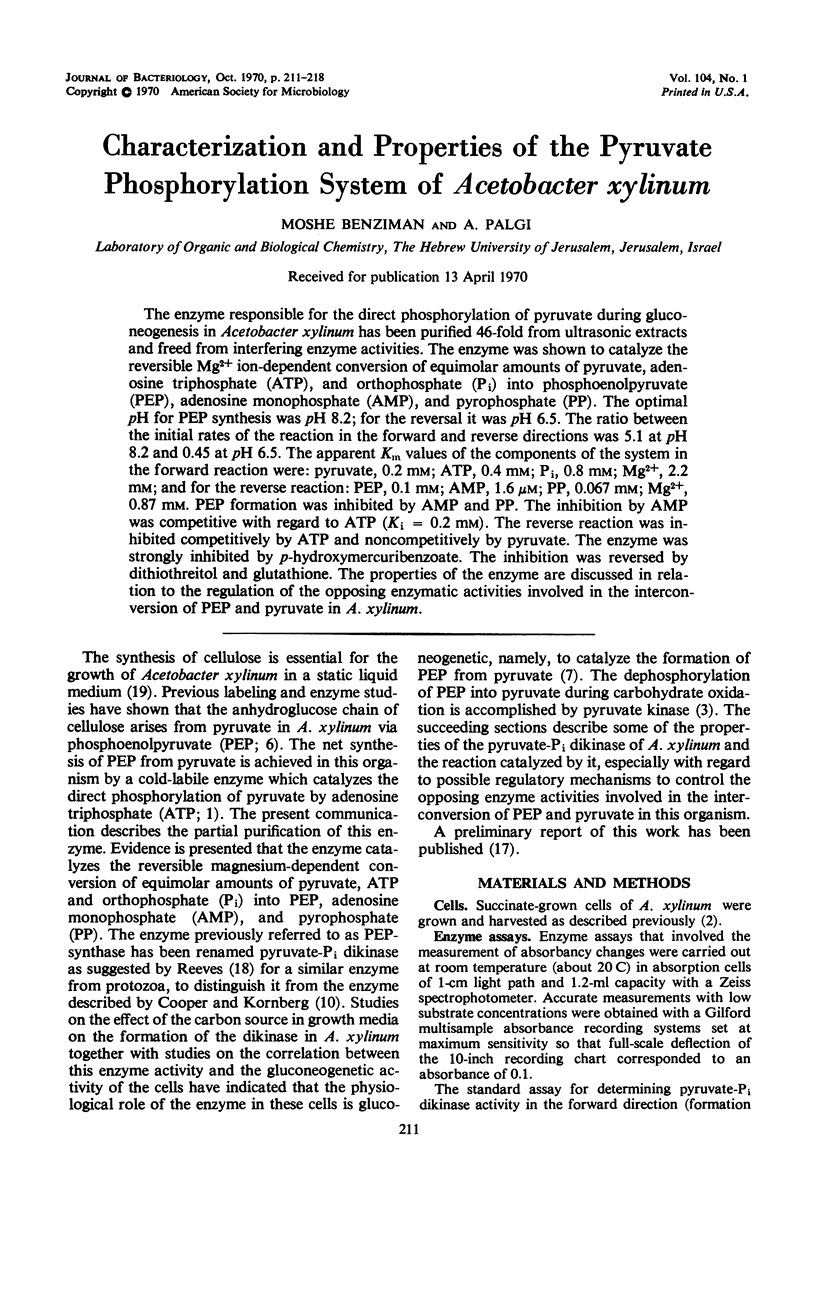
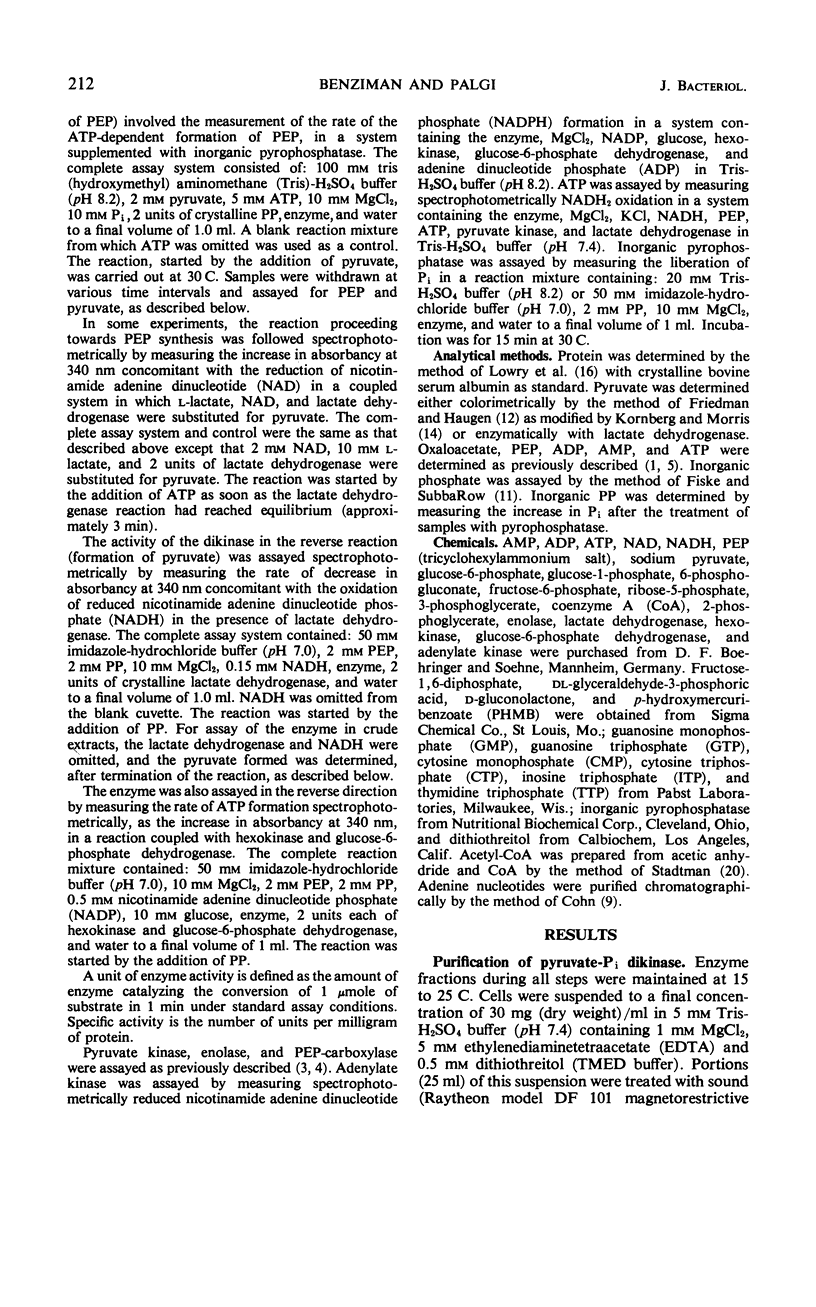
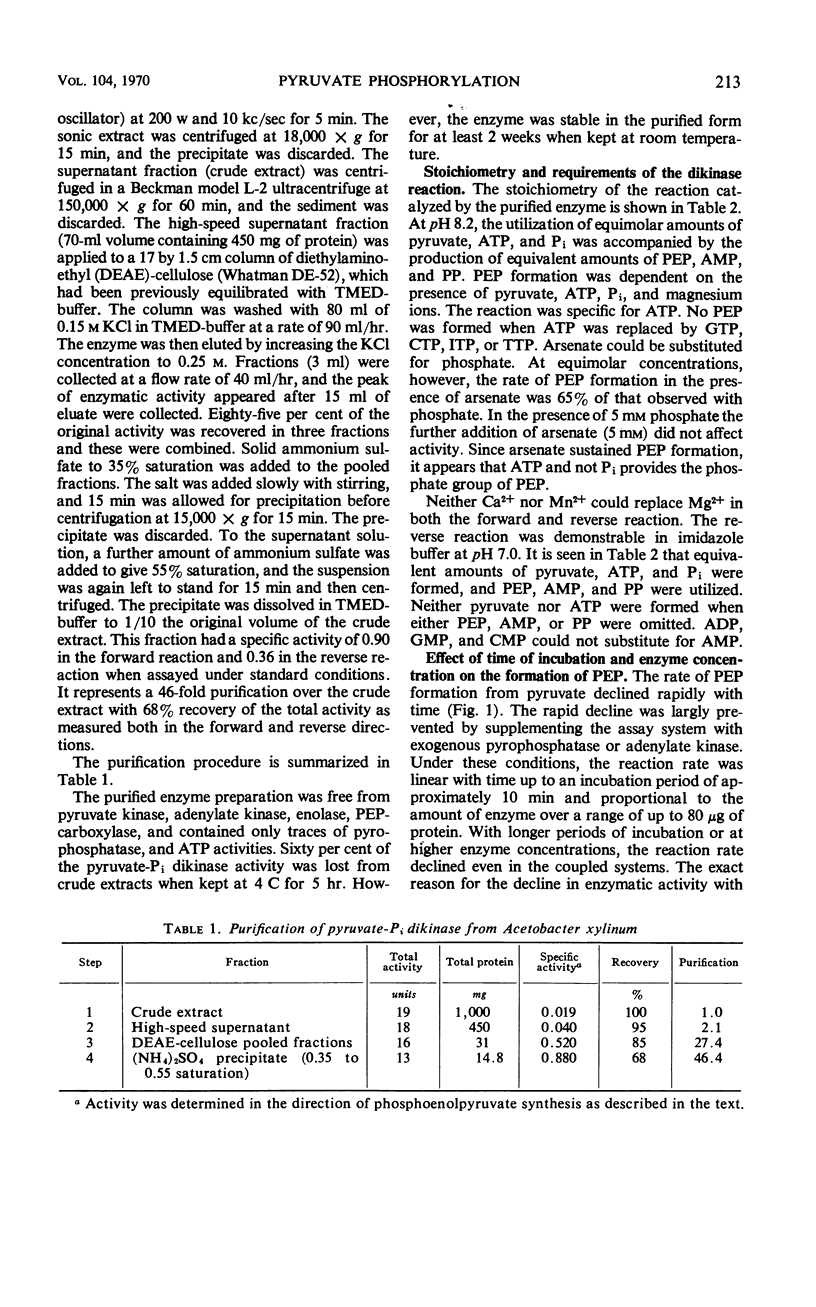
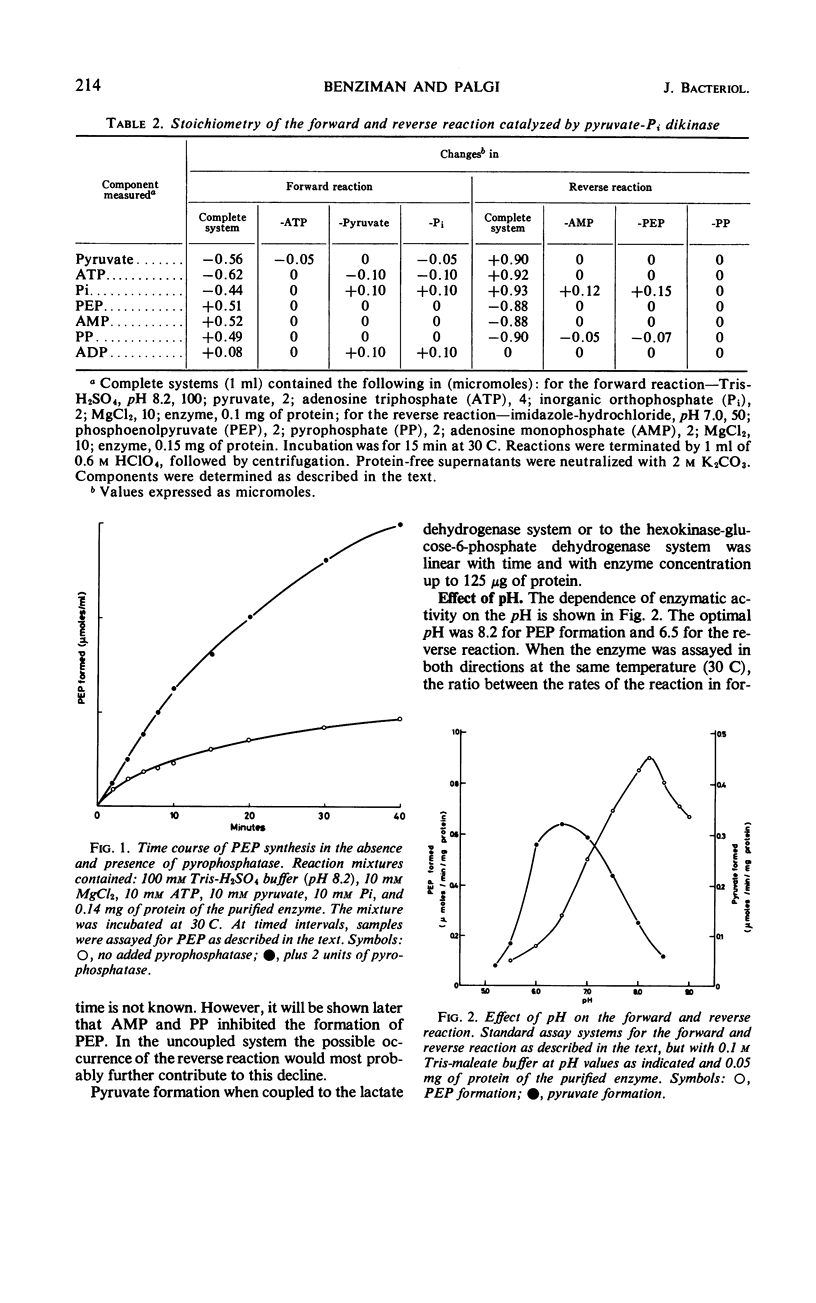
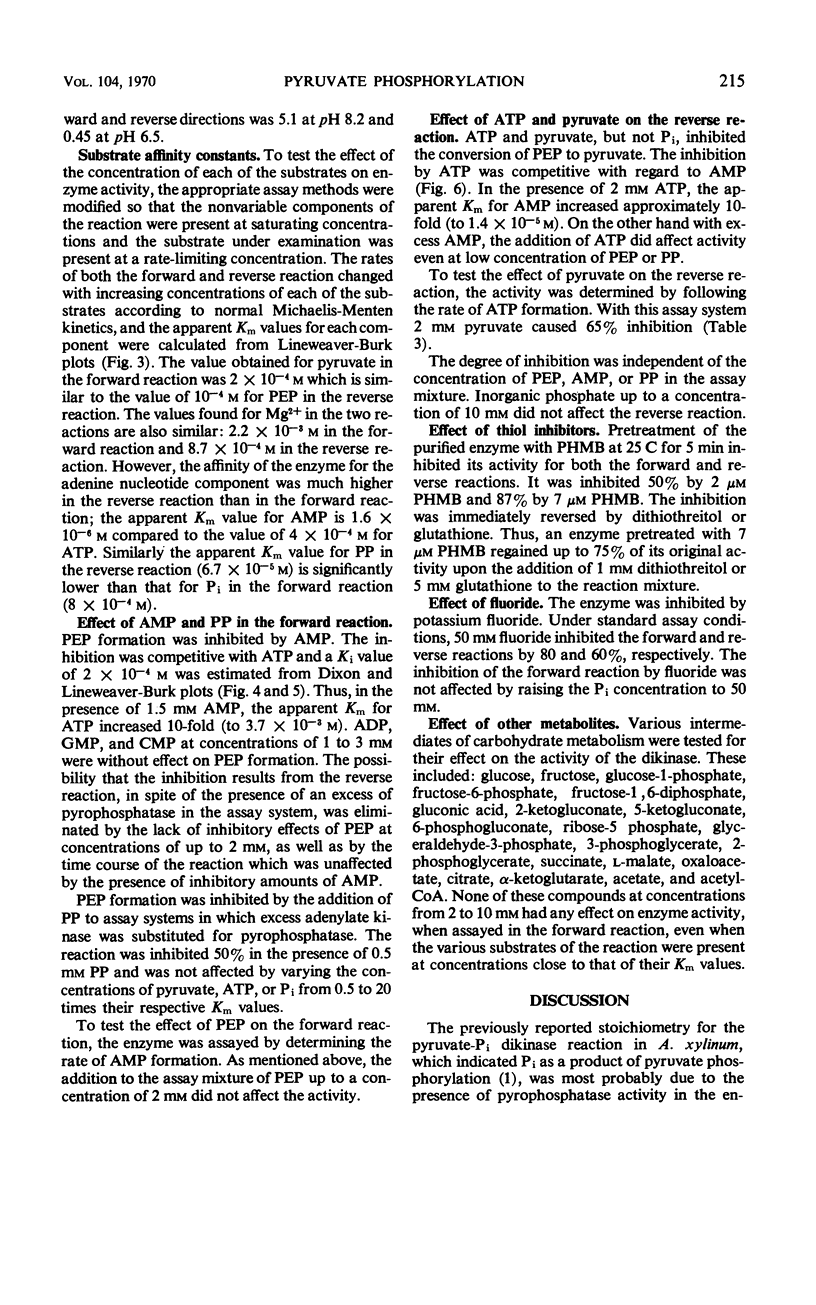
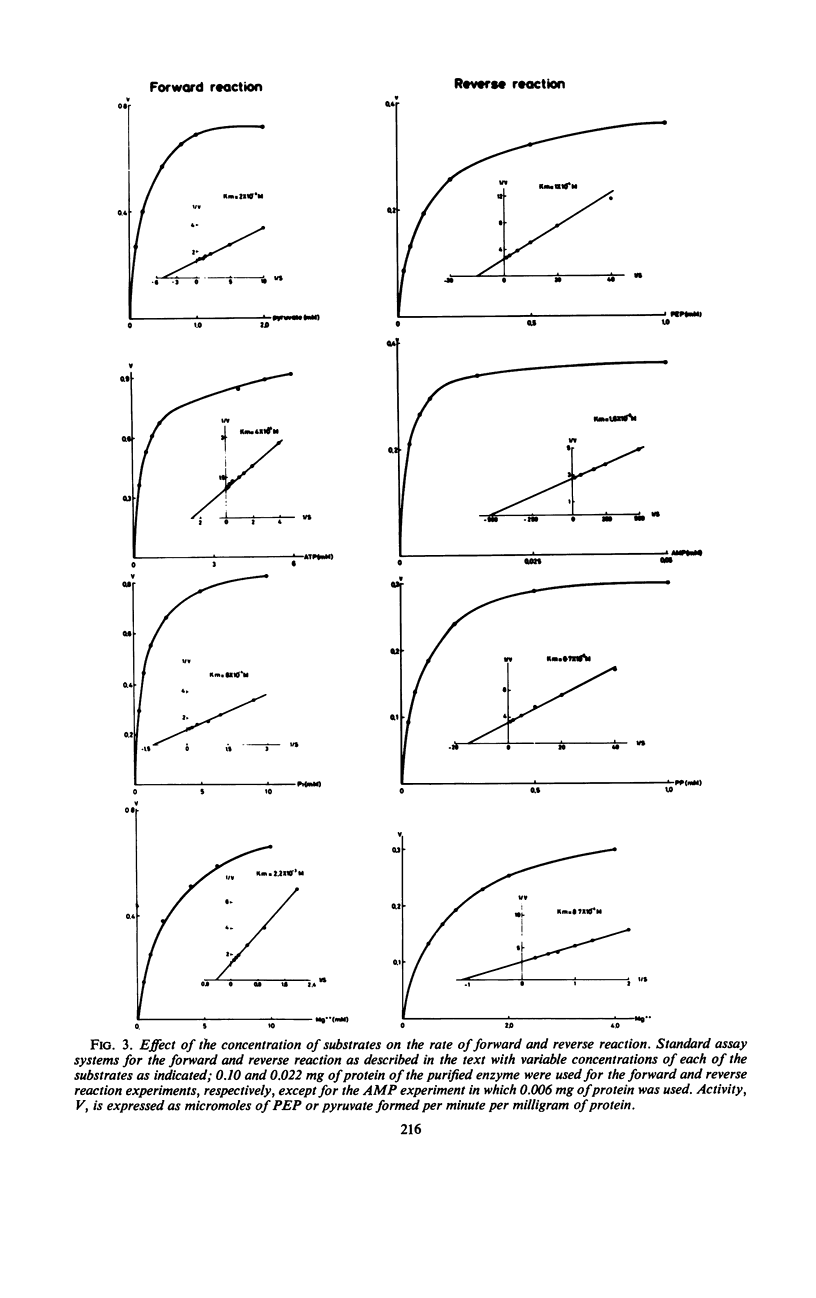
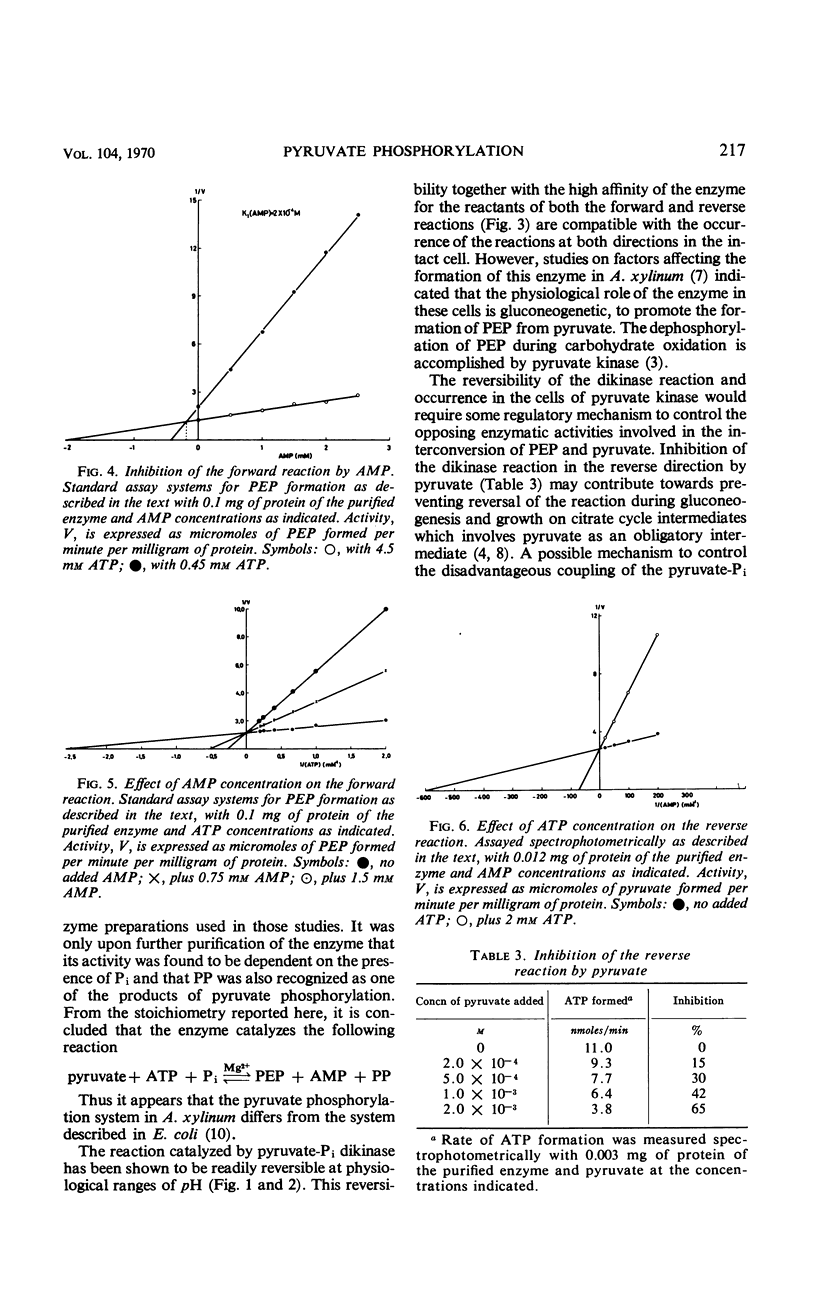
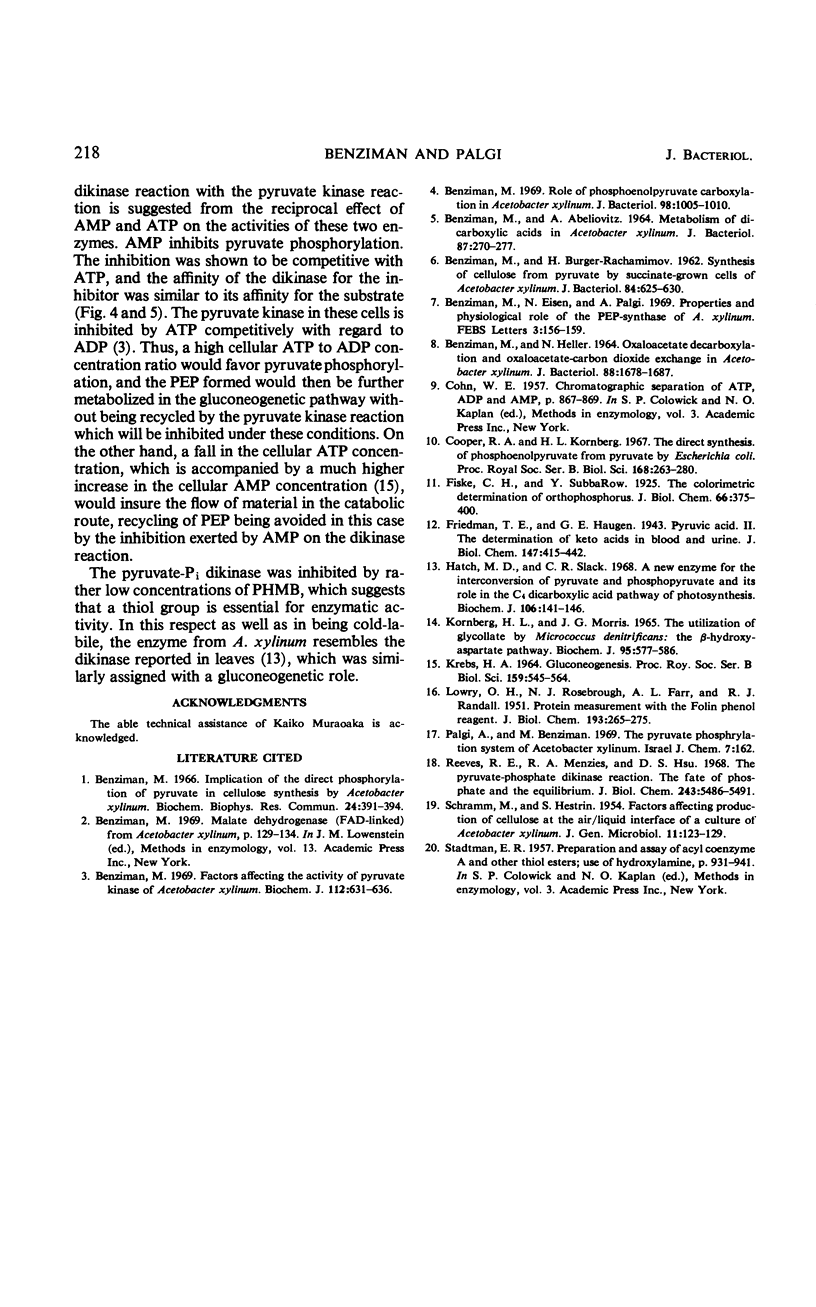
Selected References
These references are in PubMed. This may not be the complete list of references from this article.
- BENZIMAN M., ABELIOVITZ A. METABOLISM OF DICARBOXYLIC ACIDS IN ACETOBACTER XYLINUM. J Bacteriol. 1964 Feb;87:270–277. doi: 10.1128/jb.87.2.270-277.1964. [DOI] [PMC free article] [PubMed] [Google Scholar]
- BENZIMAN M., BURGER-RACHAMIMOV H. Synthesis of cellulose from pyruvate by succinate-grown cells of Acetobacter xylinum. J Bacteriol. 1962 Oct;84:625–630. doi: 10.1128/jb.84.4.625-630.1962. [DOI] [PMC free article] [PubMed] [Google Scholar]
- BENZIMAN M., HELLER N. OXALOACETATE DECARBOXYLATION AND OXALOACETATE-CARBON DIOXIDE EXCHANGE IN ACETOBACTER XYLINUM. J Bacteriol. 1964 Dec;88:1678–1687. doi: 10.1128/jb.88.6.1678-1687.1964. [DOI] [PMC free article] [PubMed] [Google Scholar]
- Benziman M., Eisen N., Palgi A. Properties and physiological role of the pep-synthase of A. xylinum. FEBS Lett. 1969 Apr;3(2):156–159. doi: 10.1016/0014-5793(69)80123-7. [DOI] [PubMed] [Google Scholar]
- Benziman M. Factors afecting the activity of pyruvate kinase of Acetobacter xylinum. Biochem J. 1969 May;112(5):631–636. doi: 10.1042/bj1120631. [DOI] [PMC free article] [PubMed] [Google Scholar]
- Benziman M. Implication of the direct phosphorylation of pyruvate in cellulose synthesis by Aceto-bacter xylinum. Biochem Biophys Res Commun. 1966 Aug 12;24(3):391–394. doi: 10.1016/0006-291x(66)90170-7. [DOI] [PubMed] [Google Scholar]
- Benziman M. Role of phosphoenolpyruvate carboxylation in Acetobacter xylinum. J Bacteriol. 1969 Jun;98(3):1005–1010. doi: 10.1128/jb.98.3.1005-1010.1969. [DOI] [PMC free article] [PubMed] [Google Scholar]
- Cooper R. A., Kornberg H. L. The direct synthesis of phosphoenolpyruvate from pyruvate by Escherichia coli. Proc R Soc Lond B Biol Sci. 1967 Sep 12;168(1012):263–280. doi: 10.1098/rspb.1967.0065. [DOI] [PubMed] [Google Scholar]
- Hatch M. D., Slack C. R. A new enzyme for the interconversion of pyruvate and phosphopyruvate and its role in the C4 dicarboxylic acid pathway of photosynthesis. Biochem J. 1968 Jan;106(1):141–146. doi: 10.1042/bj1060141. [DOI] [PMC free article] [PubMed] [Google Scholar]
- KORNBERG H. L., MORRIS J. G. THE UTILIZATION OF GLYCOLLATE BY MICROCOCCUS DENITRIFICANS: THE BETA-HYDROXYASPARTATE PATHWAY. Biochem J. 1965 Jun;95:577–586. doi: 10.1042/bj0950577. [DOI] [PMC free article] [PubMed] [Google Scholar]
- KREBS H. THE CROONIAN LECTURE, 1963. GLUCONEOGENESIS. Proc R Soc Lond B Biol Sci. 1964 Mar 17;159:545–564. doi: 10.1098/rspb.1964.0019. [DOI] [PubMed] [Google Scholar]
- LOWRY O. H., ROSEBROUGH N. J., FARR A. L., RANDALL R. J. Protein measurement with the Folin phenol reagent. J Biol Chem. 1951 Nov;193(1):265–275. [PubMed] [Google Scholar]
- Reeves R. E., Menzies R. A., Hsu D. S. The pyruvate-phosphate dikinase reaction. The fate of phosphate and the equilibrium. J Biol Chem. 1968 Oct 25;243(20):5486–5491. [PubMed] [Google Scholar]
- SCHRAMM M., HESTRIN S. Factors affecting production of cellulose at the air/liquid interface of a culture of Acetobacter xylinum. J Gen Microbiol. 1954 Aug;11(1):123–129. doi: 10.1099/00221287-11-1-123. [DOI] [PubMed] [Google Scholar]


